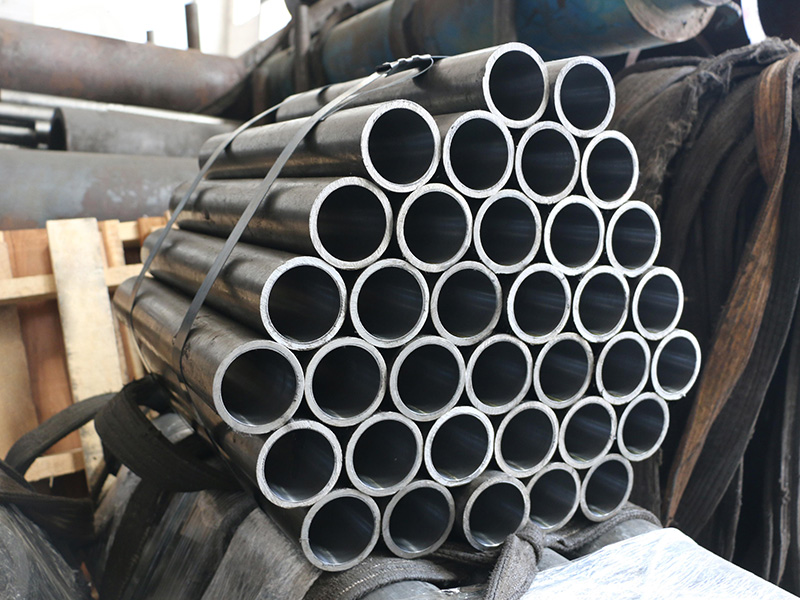In hydraulic systems, the cylinder barrel serves as a core component that underpins the operation of machinery across industries—from heavy construction equipment to precision manufacturing tools. Grasping its functions is critical for ensuring system efficiency, reducing downtime, and extending equipment lifespan. This article defines the hydraulic cylinder barrel, outlines its primary roles, and highlights its industrial significance, alongside maintenance best practices.
A hydraulic cylinder acts as a mechanical actuator, converting hydraulic energy (from pressurized fluid) into linear mechanical force and stroke. The cylinder barrel is the cylindrical main body of this actuator, designed to:
- House the piston and accommodate its reciprocal movement.
- Withstand extreme internal fluid pressures and external mechanical loads.
- Maintain a sealed environment for hydraulic fluid.
Constructed from high-strength materials—typically carbon steel, alloy steel, or ductile cast iron—the barrel’s interior undergoes precision honing. This process creates a ultra-smooth, uniform surface (with roughness values often ≤ 0.4 μm Ra) to minimize friction between the piston and barrel wall, prevent seal wear, and ensure leak-free operation.
2. Primary Functions of a Cylinder Barrel
The cylinder barrel’s role is multi-faceted, directly influencing the hydraulic system’s performance and reliability. Its three core functions are as follows:
2.1 Guide and Enable Piston Movement
The barrel provides a rigid, dimensionally stable cavity for the piston to move linearly. Pressurized hydraulic fluid acts on either side of the piston, driving its back-and-forth stroke—this movement is what ultimately delivers the mechanical force needed for tasks like lifting, pushing, or clamping. The barrel’s precise roundness and straightness (tolerance typically ≤ 0.1 mm/m) ensure the piston travels without eccentricity, avoiding uneven wear or pressure loss.
2.2 Contain Pressurized Hydraulic Fluid
Hydraulic systems rely on trapped, pressurized fluid to transmit force. The cylinder barrel acts as a pressure vessel, maintaining a hermetic seal via piston seals, rod seals, and end caps. This containment prevents fluid leakage—even at pressures ranging from 10 MPa (light-duty) to over 35 MPa (heavy-duty applications)—which is critical for preserving system efficiency and preventing environmental contamination.
2.3 Provide Structural Integrity
The barrel bears both internal fluid pressure and external loads (e.g., bending forces on the piston rod during lifting operations). Its robust design—including wall thickness calculated for pressure ratings (per standards like ISO 6022 or SAE J1209)—resists deformation, cracking, or permanent damage. This structural stability ensures the entire hydraulic cylinder operates safely under dynamic and static stress.
3. Industrial Applications of Cylinder Barrels
Cylinder barrels are integral to systems requiring linear force, with consistent functionality across sectors:
- Construction: Excavators (arm/lift cylinders), bulldozers (blade cylinders), and cranes (hoist cylinders) depend on barrels to handle heavy loads (often ≥ 10 tons) and harsh conditions (dust, vibration, temperature fluctuations).
- Manufacturing: Injection molding machines, metal presses, and assembly lines use precision barrels to deliver controlled strokes (with positional accuracy ≤ 0.5 mm) for repeatable production processes.
- Automotive: Brake master cylinders (fluid containment) and suspension cylinders (damping force) rely on compact, high-pressure barrels to ensure vehicle safety and ride comfort.
- Agriculture: Tractor loaders, harvester arms, and plow lifts use corrosion-resistant barrels to withstand exposure to moisture and fertilizers.
4. Maintenance Best Practices for Cylinder Barrels
To maximize the barrel’s lifespan (typically 5–10 years in industrial use) and system reliability, adhere to these maintenance protocols:
1. Regular Inspection: Check for surface damage (scratches, dents), corrosion (especially in outdoor applications), or excessive wear using a borescope for internal assessment.
2. Lubrication Management: Use compatible hydraulic fluids (per OEM specifications) to maintain lubrication between the piston and barrel wall—contaminated or degraded fluid accelerates seal failure.
3. Seal Replacement: Replace worn piston seals, rod seals, or wiper seals at scheduled intervals (or if leakage is detected) to prevent fluid loss and internal contamination.
4. Contamination Control: Keep the barrel and surrounding components clean; use filters (≥ 10 μm) in the hydraulic circuit to prevent dirt, metal particles, or debris from entering the barrel and causing abrasion.




